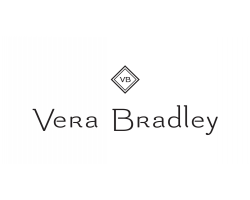When it comes to enhancing the aesthetics of your home, few things have as significant an impact as a fresh coat of paint. However, the beauty of your newly painted walls should not come at the cost of your health or the environment. Traditional paints can release harmful volatile organic compounds (VOCs) into the air, which can lead to health problems and contribute to air pollution. This is where non-toxic paint comes into play. In this comprehensive guide, we'll delve into the world of non-toxic interior wall paints, helping you make an informed choice for a healthier and more eco-friendly living space.
Why Choose Non-Toxic Paint for Interior Walls?
Before we explore the options for non-toxic paint, let's understand why it's crucial for your home:
1. Health Benefits: Non-toxic paints contain minimal or no VOCs, which means they are much safer for your health. Traditional paints can release harmful chemicals into the air, leading to respiratory problems, headaches, and allergies.
2. Environmental Impact: Eco-friendly paints have a lower environmental footprint. They produce fewer greenhouse gases, reduce air pollution, and have less impact on ecosystems.
3. Improved Indoor Air Quality: Non-toxic paints contribute to better indoor air quality by eliminating harmful fumes. This is especially important for those with allergies or asthma.
4. Durability: Many non-toxic paints are just as durable and long-lasting as traditional paints, ensuring your walls look great for years to come.
Types of Non-Toxic Paint
Now, let's explore the various types of non-toxic paints available for your interior walls:
Zero-VOC Paint
Zero-VOC paints contain minimal or no volatile organic compounds. They are a popular choice for eco-conscious homeowners. These paints are just as effective as traditional paints but without the harmful chemicals.
Low-VOC Paint
Low-VOC paints have reduced levels of volatile organic compounds compared to traditional paints. While they may still emit some VOCs, the levels are significantly lower, making them a better choice for those looking to strike a balance between performance and eco-friendliness.
Natural Paint
Natural paints are made from organic and renewable materials such as plant extracts, minerals, and clay. They are free of synthetic chemicals and offer excellent breathability for your walls. These paints are an excellent choice for those with chemical sensitivities.
Milk Paint
Milk paint is a traditional paint made from milk protein, lime, and natural pigments. It's non-toxic and biodegradable. Milk paint gives walls a unique, rustic appearance and is an eco-friendly choice.
Clay Paint
Clay paint is made from natural clay, minerals, and natural pigments. It's breathable and helps regulate humidity in your home. Clay paints have a textured finish and come in a range of earthy tones.
Chalk Paint
Chalk paint is a water-based paint that contains minimal VOCs. It's often used for furniture, but it can also be applied to interior walls. Chalk paint gives walls a matte, velvety finish.
Choosing the Best Non-Toxic Paint
When selecting the best non-toxic paint for your interior walls, consider the following factors:
VOC Content
Check the VOC content of the paint. Zero-VOC and low-VOC paints are the safest options in terms of VOC emissions.
Brand Reputation
Choose paints from reputable brands known for their commitment to producing non-toxic and eco-friendly products.
Color Options
Ensure the paint you choose offers a wide range of colors and finishes to match your interior design preferences.
Coverage and Durability
Look for paints that provide good coverage and durability, ensuring your walls stay vibrant and fresh for years.
Certification
Check if the paint has received certifications from organizations like GREENGUARD or EcoLogo, which ensure compliance with environmental and health standards.
Popular Non-Toxic Paint Brands
To help you get started on your quest for non-toxic interior wall paint, here are some popular brands known for their eco-friendly options:
1. Benjamin Moore Natura: This brand offers zero-VOC and zero-emissions paints that are both durable and eco-friendly.
2. Sherwin-Williams Harmony: Harmony paints are low-VOC and GREENGUARD Gold certified, making them a safe and eco-conscious choice.
3. Behr Premium Plus Ultra: Behr's Premium Plus Ultra line offers low-VOC paints with excellent coverage and a wide range of colors.
4. Earthborn: Earthborn specializes in clay-based paints that are entirely VOC-free and environmentally friendly.
5. Annie Sloan Chalk Paint: While primarily designed for furniture, Annie Sloan's Chalk Paint can also be used on walls and is known for its low VOC content.
6. Ecos Paints: Ecos offers a wide range of non-toxic paints, including zero-VOC and natural paint options.
Application Tips
Here are some tips for applying non-toxic paint to your interior walls:
Preparation: Properly clean and prepare your walls before painting to ensure the paint adheres well.
Ventilation: While non-toxic paints are safer, it's still essential to maintain good ventilation during and after painting to help any remaining fumes dissipate.
Test Samples: Before committing to a color, test paint samples on a small section of your wall to ensure you're satisfied with the shade.
Multiple Coats: Be prepared to apply multiple coats for even coverage, especially with natural paints.
Choosing the best non-toxic paint for your interior walls is not only a wise decision for your health but also for the environment. With a growing awareness of the importance of eco-friendly and health-conscious living, non-toxic paints have become readily available and affordable. Whether you opt for zero-VOC, low-VOC, natural, or milk paint, you can transform your living space into a healthier and more sustainable environment while still enjoying vibrant and beautiful walls. Invest in the well-being of your family and the planet by making the switch to non-toxic interior wall paints—it's a choice that paints a brighter future for everyone.










 English (US) ·
English (US) ·